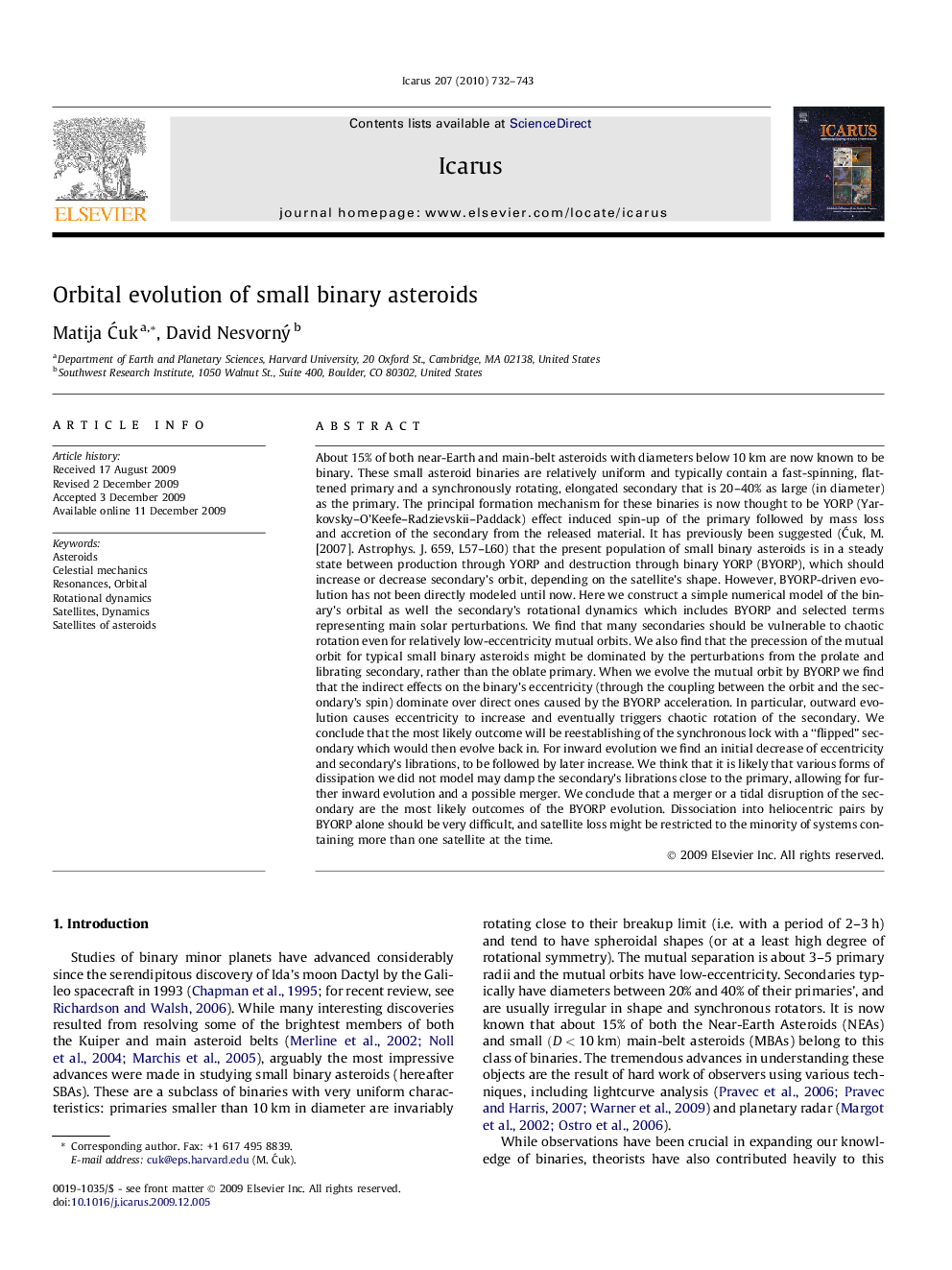| Article ID | Journal | Published Year | Pages | File Type |
|---|---|---|---|---|
| 1774280 | Icarus | 2010 | 12 Pages |
About 15% of both near-Earth and main-belt asteroids with diameters below 10 km are now known to be binary. These small asteroid binaries are relatively uniform and typically contain a fast-spinning, flattened primary and a synchronously rotating, elongated secondary that is 20–40% as large (in diameter) as the primary. The principal formation mechanism for these binaries is now thought to be YORP (Yarkovsky–O’Keefe–Radzievskii–Paddack) effect induced spin-up of the primary followed by mass loss and accretion of the secondary from the released material. It has previously been suggested (Ćuk, M. [2007]. Astrophys. J. 659, L57–L60) that the present population of small binary asteroids is in a steady state between production through YORP and destruction through binary YORP (BYORP), which should increase or decrease secondary’s orbit, depending on the satellite’s shape. However, BYORP-driven evolution has not been directly modeled until now. Here we construct a simple numerical model of the binary’s orbital as well the secondary’s rotational dynamics which includes BYORP and selected terms representing main solar perturbations. We find that many secondaries should be vulnerable to chaotic rotation even for relatively low-eccentricity mutual orbits. We also find that the precession of the mutual orbit for typical small binary asteroids might be dominated by the perturbations from the prolate and librating secondary, rather than the oblate primary. When we evolve the mutual orbit by BYORP we find that the indirect effects on the binary’s eccentricity (through the coupling between the orbit and the secondary’s spin) dominate over direct ones caused by the BYORP acceleration. In particular, outward evolution causes eccentricity to increase and eventually triggers chaotic rotation of the secondary. We conclude that the most likely outcome will be reestablishing of the synchronous lock with a “flipped” secondary which would then evolve back in. For inward evolution we find an initial decrease of eccentricity and secondary’s librations, to be followed by later increase. We think that it is likely that various forms of dissipation we did not model may damp the secondary’s librations close to the primary, allowing for further inward evolution and a possible merger. We conclude that a merger or a tidal disruption of the secondary are the most likely outcomes of the BYORP evolution. Dissociation into heliocentric pairs by BYORP alone should be very difficult, and satellite loss might be restricted to the minority of systems containing more than one satellite at the time.
